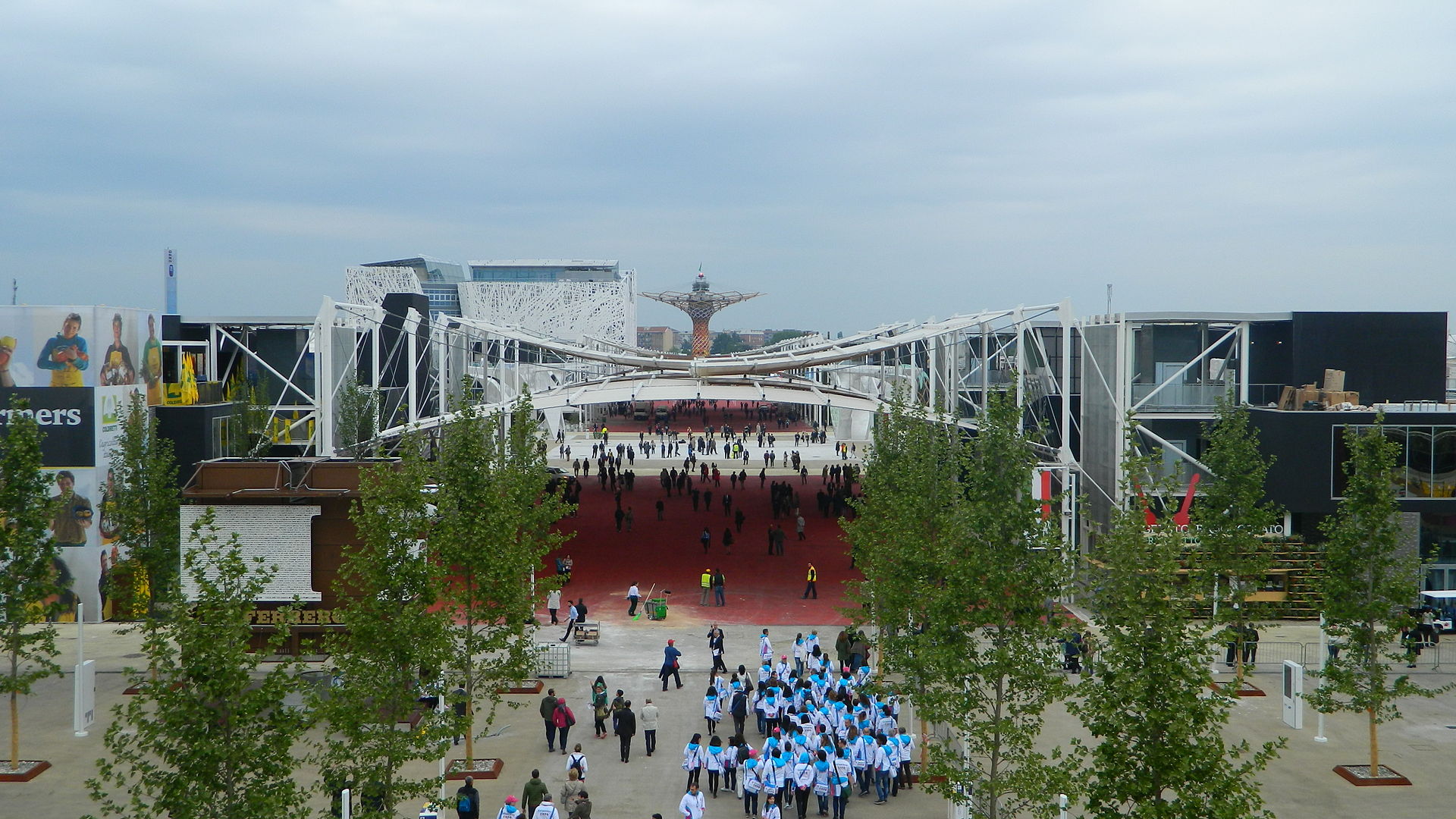The 2015 Universal Exposition is now kicking off in a completely restyled city of Milan, Italy. For at least six more months, the whole world will be looking at, talking of, and heading to the incredible 1.1 square kilometers exposition area, designed by a team of four architects, including the Italian Stefano Boeri (Vertical Forest, Milan 2014).
Walking along the two main avenues, resembling the Ancient Roman cardo (north-south) and decumanus (east-west) pattern, the over 20 million expected visitors will have the opportunity to experience different culinary traditions in the national pavilions, as well as to discover the qualities of specific types of food or diets in the so-called clusters.
Yet all of these buildings and the entire area of Expo Milan 2015 are also true works of art to be explored and admired, as they showcase at the same time the best of our planet’s nature and of the human genius.
With this in mind, the Italian Pavilion couldn’t but be impressively beautiful, a mirror of the Country’s excellence in both food and art. Built along the cardo, it consists of Palazzo Italia, four temporary structures, and Lake Arena, for a total exhibition space of about 14,000 square meters. So what should you expect from it?
First of all, Palazzo Italia won’t be dismantled after Expo’s closing ceremony on October 31st. On the contrary, it will remain a memento of Italy’s decisive step out of the economic crisis and towards the future. Created by the Italian studio Nemesi & Partners, it is inspired by the traditional borgo and plays a central role in the exposition, with the piazza as a metaphor of the universal community. Its stunning petrified tree-like architecture is made of smog-filtering cement panels and covered by a photovoltaic glass rooftop that makes it mostly energy independent. It will host fruit and vegetable markets, sensory experiences, classic and contemporary artworks, and much more.
The ecology and nature theme continues in the recently unveiled Tree of Life, a 37-meter tall wood and steel machine that has soon become the icon of the Italian Pavilion. Installed in the middle of Lake Arena, the largest open space in the Expo area, it will offer water and light shows, concerts, and other special performances on floating platforms. Noteworthy, the entrance in the Tree is allowed only to visitors under 25, who will have the opportunity to leave their messages and suggestions on how Italy should ideally improve.
In the other buildings along the northern side of the cardo, Italy and its “powers” will feature the main exhibition entitled Italian Identity, a unique display of artistic and manual skills, landscapes and architectural gems, and craftsmanship used to overcome challenging situations and build a future together, with contributions from each of the 21 Regions and Autonomous Provinces.
The southern part of the avenue, instead, will present the excellence of Made in Italy in different fields, from high quality food products to sustainable agricultural systems, such as the short food supply chain typical of the Mediterranean diet.
Dedicated spaces, including the Wine Pavilion, will offer the chance to learn more about the production line, as well to taste world-famous flavors that undeniably underpin our Country’s export and tourism business.
This is only what the Italian Pavilion has in store for Expo’s attendees, but many more interesting events await, all against the backdrop of Italy’s splendor.






























